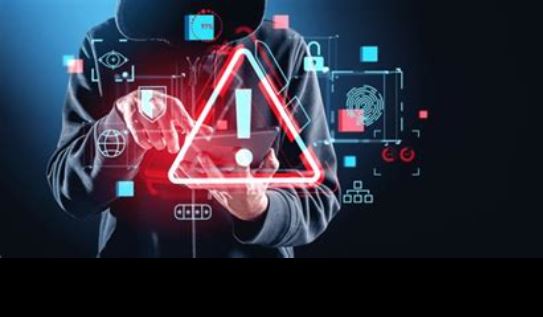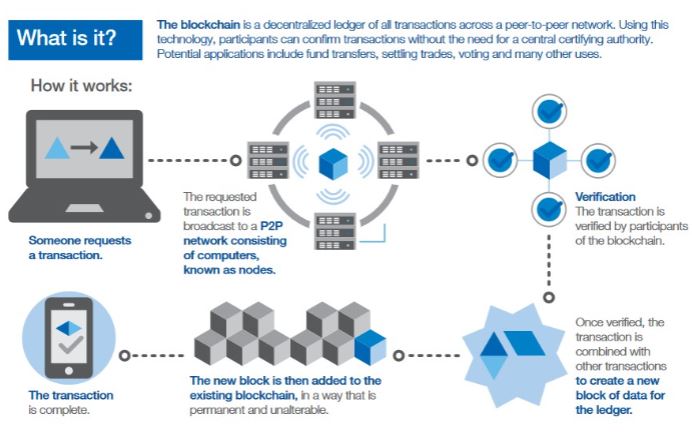
The Dangers Of Blockchain
By Karen Schumacher
Knowing the federal government has admitted its commitment to the implementation of Agenda 2030, it becomes easier to recognize how Congress aligns with the dictates of the Sustainable Development Goals (SDG).
H. R. 6572, Deploying American Blockchains Act of 2023, introduced by a Republican, is legislation that promotes “the competitiveness of the United States related to the deployment, use, application, and competitiveness of blockchain technology or other distributed ledger technology.” While Rep. Buschon tends to focus on supply chains as the need for blockchain technology, it really is just one stepping stone towards blockchain technology for everything, in which this article outlines the purpose of the bill more accurately. In fact, the bill text doesn’t even really address supply chain issues. None the less, the World Economic Forum (WEF) has offered up a framework for blockchain implementation.
What is repulsive in the legislative text is the involvement by non-governmental organizations, “private sector individuals and entities,” while “incorporating” expertise from industry. It is also intended to support the “private sector, the public sector, and public-private partnerships.” Good old corporatism, or what some may call fascism, or corporate fascism.
Blockchain creates a permanent digital ledger of everything a person does in life in blocks that are connected to each other in a chain. Essentially, each block contains information on every aspect of a person’s life.
Financial transactions are the most common understanding of how blockchains work, documenting everything one earns, spends, and buys in perpetuity and are needed for the implementation of Central Bank Digital Currency (CBDC). With blockchain, legal transactions and documents are stored forever. Health records can be stored for access by any medical provider or hospital. What medical and other blockchain information would be available to the government for those on public assistance, Social Security, Medicaid, or Medicare?
The devastating aspect is that all of these digital records on a blockchain require a digital ID. Without one, the ability exists to lock someone out of life if they don’t participate. The option of not complying will be termination of life as access to the necessities of life would be cut off.
CBDC blockchains would take control over personal finances and local banking. The Independent Community Bankers of America (ICBA) understands this, and the privacy concerns it would bring is recognized by the American Bankers Association (ABA), CBDCs “would move money away from banks and into accounts at the Federal Reserve”. Putting blockchain legislation into effect advances the goal of CBDCs.
The current White House has been pushing for a CBDC system, but Congress and others are working to stop it, and preventing the government from collecting personal financial information on everyone.
Both the UN and WEF expect Digital Cooperation for advancement of the SDG. Not only does this include blockchain technology but Internet of Things, and Internet of Everything.
In 2022, WEF held a panel discussion on digital cooperation. To demonstrate how out of touch these blankety-blanks are, Cisco CEO Chuck Robbins states at the 16″ mark that the pandemic proved that even though locked down we can still be educated, receive healthcare, conduct financial transactions, and we don’t have to move to get a job. At the 22:41″ mark Microsoft President Brad Smith acknowledges they can “turn off the ability to keep people alive.” Lastly, at the 26:31″ mark Chinese politician Josephine Teo states it is the role of the government to step in on consumer pricing, and corporations should work with the government on regulations at the 29″ mark. Do they even listen to what they are saying? Listen carefully, they are discussing the world they envision for others.
What does this all have to do with blockchain? Well, blockchain is just another piece of the puzzle that will complete the transformation to an all surveilled digital life. Everyone would be forced into that life and connected. It is part of reaching SDG #9, Build Resilient Infrastructure, Promote Inclusive and Sustainable Industrialization and Foster Innovation, Target 9.8.
In spite of being touted as an ideal system, blockchain doesn’t come without problems. such as slow response times, sucking up large amounts of energy, potential for hacking, required technology experts to manage it, and issues with interoperability,
The White House is rapidly moving forward with this digital agenda, ensuring everyone has internet. In the last paragraph, the White House (while remaining “committed to the full implementation of the 2030 Agenda”), also commits to Digital Public Infrastructure (DPI), another UN and WEF scheme. DPI networks all of these systems together through its three main components, digital identity, electronic payment, and data exchange systems. DPI is important because it accelerates SDG implementation.

If the United States doesn’t conform to what is happening around the rest of the world, will the United States become an isolated island of freedom?